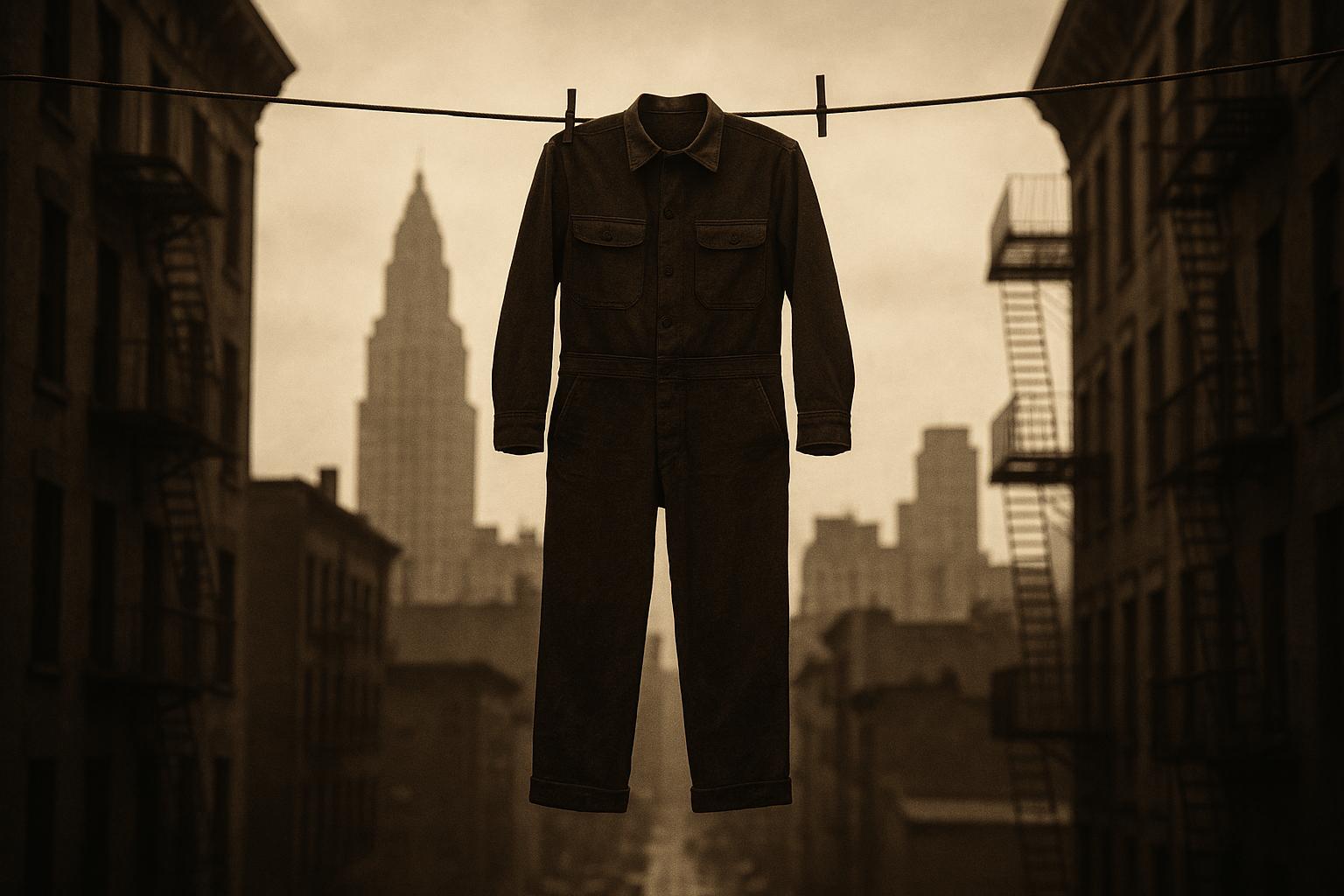In the vibrant heart of Manhattan’s Chinatown, Sum London made a distinctive mark during New York Fashion Week (NYFW) with a guerrilla runway show that fused cultural storytelling and sustainable fashion innovation. Founded by Margaret Sam, Sum London presented the Jiā Yóu collection, which pays homage to the largely overlooked history of some 20,000 Asian sailors who served in World War II. The collection's rugged yet fluid silhouettes, designed in collaboration with Austrian fibre producer Lenzing and Chinese mill Advance Denim, merge heritage workwear styles with modern sustainable fibres like Tencel Lyocell, reflecting a deep respect for immigrant work ethic and craftsmanship.
Margaret Sam emphasised that Sum London’s identity is anchored in cultural authenticity, community, and a commitment to quality Eastern-Utilitarianism, deliberately positioning the NYFW show within Chinatown to align with the community it represents. This approach avoids the superficial noise often associated with fashion weeks, aiming instead for integrity both in narrative and location. Sam's personal connection to the brand reinforces its values and cultural roots, which she insists will remain constant even as the brand grows. She described the process of bringing Jiā Yóu to life as an emotionally charged and logistically complex journey, especially balancing respect for the community alongside managing the demands of an international fashion event.
Sum London operates on a sustainable made-to-order, direct-to-consumer model, focusing on nurturing a loyal audience rather than chasing rapid, unsustainable growth. Rather than viewing capsule collections and pop-ups as limitations, Sam sees them as strategic tools that keep the brand agile and true to its values. Inspired by retail models such as Dover Street Market and Beams, Sum London plans selective growth through pop-ups in cultural hubs and an expanding online presence. Beyond Jiā Yóu, the brand’s core line celebrates mixed cultural identities and is designed to be seasonless and conceptual, aimed at long-term cultural resonance.
A key part of the collection’s development was the technical challenge of recreating authentic heritage workwear using sustainable materials. Sam credits the partnership with Lenzing for enabling the balance between the rugged, lived-in feel of vintage workwear and the performance qualities demanded by contemporary fashion. Lenzing’s global business development manager, Dennis Hui, highlighted how such collaborations represent a forward-looking innovation model in fashion, integrating fibre producers, mills, and designers from the earliest stages. This approach prioritises sustainability as a foundation rather than an afterthought, making premium eco-friendly materials commercially viable and accessible, especially for emerging brands.
The scaling of responsible fibres like Tencel is becoming increasingly feasible as demand grows and production expands, according to Hui. Lenzing supports young designers by facilitating industry collaborations, helping to democratise access to sustainable innovation. This synergy between cultural relevance and market potential is seen as a critical driver in accelerating sustainable fashion’s future.
Sum London’s positioning at the crossroads of East and West has already found a receptive global audience. Sam notes significant community support, particularly among second-generation Asians, mixed-heritage individuals, and globally minded consumers who seek to express complex identities through fashion. The brand's commercial ambitions are global but focused strategically on cultural hubs like London, New York, Shanghai, Tokyo, Hong Kong, Singapore, and Los Angeles, where heritage meets youth culture. Asia, in particular, presents exciting opportunities as pride in cultural identity grows, and the brand's British-Asian identity offers adaptability across diverse markets.
This narrative of heritage-driven sustainable fashion sits within a broader industry trend evident at recent fashion weeks, where designers increasingly prioritise environmental responsibility. Other showcases at NYFW, such as the innovative denim collections using sustainable fibres, and the use of recycled or deadstock materials by emerging designers, underscore a shift towards mindful consumption and eco-conscious production methods. Across major fashion capitals like London and New York, designers are adopting closed-loop studios, upcycling, and technological innovations such as laser cutting and 3D printing, collectively raising the gold standard for sustainable fashion.
Sum London’s approach integrates these contemporary shifts with a deeply personal cultural narrative, demonstrating how independent brands can leverage heritage, sustainability, and strategic collaborations to carve out a meaningful space in the global fashion landscape. As Margaret Sam envisions, the brand aims to grow thoughtfully, maintaining community connections and cultural authenticity as it expands through careful pop-ups, collaborations, and digital engagement.
📌 Reference Map:
- Paragraph 1 – [1], [2]
- Paragraph 2 – [1]
- Paragraph 3 – [1]
- Paragraph 4 – [1]
- Paragraph 5 – [1]
- Paragraph 6 – [1]
- Paragraph 7 – [1]
- Paragraph 8 – [1], [3], [4], [5], [6], [7]
Source: Noah Wire Services
